

 |
 |
|||||||||||||||||||||||||||||
| START GERMAN FOTOALBEN WALLPAPER LINKS CONTACT | ||||||||||||||||||||||||||||||
| The Germans in Afghanistan | ||||||||||||||||||||||||||||
| Like all other European powers, Germany also maintained diplomatic representation in Afghanistan. The Consul Dr. Grobba, who advocated for the interests of the Germans in many ways, is described in the travelogue by Dr. Ing. Gerber praised. Dr. Fritz Grobba worked from October 24, 1923 to June 9, 1926 as a consul in Kabul with the German diplomatic representation. Dr. Grobba died in 1974 in Bonn. As with the accommodation of the Germans, the report of Dr. med. Gerber and the photos of my great-grandfather. The legation was housed in Bagh-e-Babur Park, which was laid out around 1500 by Babur, the founder of the Mughal dynasty, as one of 10 gardens around Kabul. In the 19th century various buildings were built, which were then used for the German Legation. Among the first German guests was the expedition of Oskar von Niedermayer who was housed there. In addition to the regular business and private rooms, the Legation was already equipped with a radio station and guest rooms. | ||||||||||||||||||||||||||||
| During his time in Afghanistan Wilhelm Rieck had different places of residence. At the beginning he lived in a homestead that also inhabited other Germans. Where today the "homestead of the Germans" was unfortunately not known anymore. It is probably also, like almost the entire country Afghanistan, completely destroyed. As can be seen on the photo on the right, he later had a room in the German Legation in Bagh-e-Babur. | ||||||||||||||||||||||||||||
| The caption says: | ||||||||||||||||||||||||||||
| „ Garden of the German Legation“ | ||||||||||||||||||||||||||||
| On the back you can read: | ||||||||||||||||||||||||||||
"German
Legation Kabul seen from the garden side right main building, left
bungalow (right on the balcony 3 windows my old apartment u. Radio
Station) " |
||||||||||||||||||||||||||||
„ Garden
of the German Legation“ |
||||||||||||||||||||||||||||
| The garden or rather the park of the German Legation in the park of Bagh e Babur. | ||||||||||||||||||||||||||||
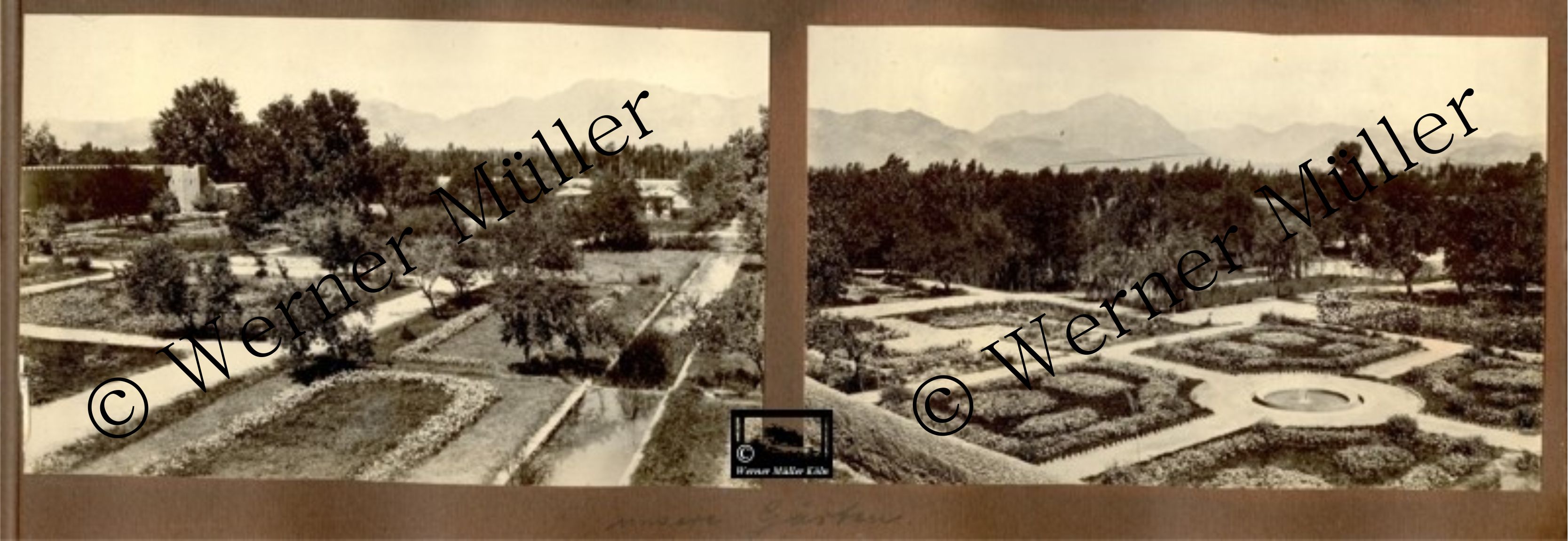 |
||||||||||||||||||||||||||||
"Our
gardens" |
||||||||||||||||||||||||||||
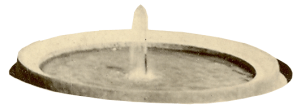 |
||||||||||||||||||||||||||||
| The two photos on the
right were taken from the same location. To get a better impression, I put
them here on top of each other. Probably my great-grandfather had two lenses
he could put in front of his glass plate camera. That he had a glass plate camera, I suspect from the note on the back of a photo where he writes: "no more plate". Although my great-grandfather commented on the photos with "Garden Party Darulaman," as you can see on the wall in the background, the garden party took place in Bagh-e-Babur. Another indication that the pictures were glued later, perhaps only in Germany, in the photo album. |
||||||||||||||||||||||||||||
| "Gardenparty Darulaman" | ||||||||||||||||||||||||||||
|
|
||||||||||||||||||||||||||||
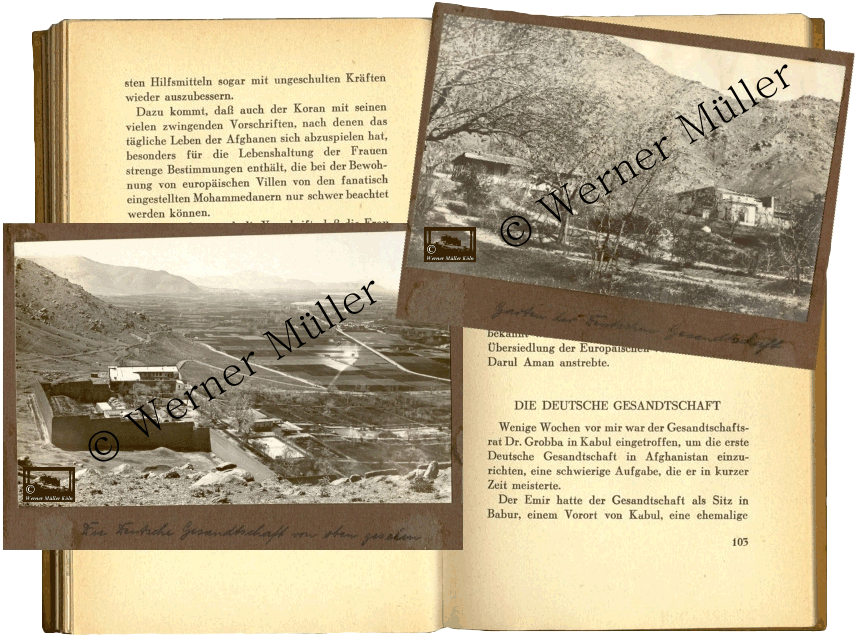 |
||||||||||||||||||||||||||||
"The
German Legation seen from the hill" |
"Garden
of the German Legation" |
|||||||||||||||||||||||||||
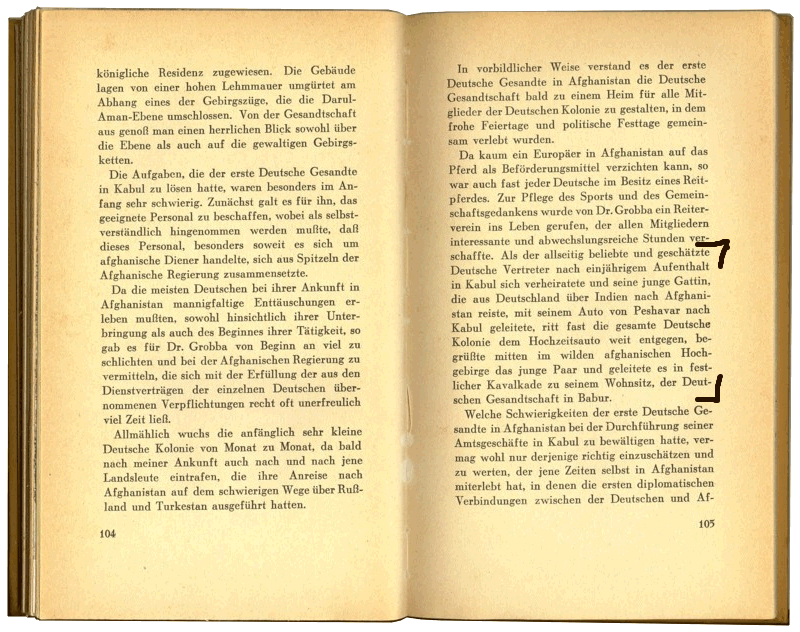 |
||||||||||||||||||||||||||||
 |
||||||||||||||||||||||||||||
|
"Reception Dr. Grobba and his wife"
Text on the reverse: "Z. Zt. Wedding procession (1925) by Dr. Grobba, consul of the german Legation and his wife The german rider club forms a guard of honor, Afghanistan Fritz Grobba was commissioned from October 24, 1923 as a consul with the establishment of diplomatic representation in Kabul. From September 14, 1924, as a Legation Council, he was also chargé d'affaires in Afghanistan until June 9, 1926. |
||||||||||||||||||||||||||||
|
||||||||||||||||||||||||||||
X |
||||||||||||||||||||||||||||
X |
||||||||||||||||||||||||||||
X |
||||||||||||||||||||||||||||
X |
||||||||||||||||||||||||||||
X |
||||||||||||||||||||||||||||
| Above the German Legation there were also graves for the Germans who had died in Afghanistan. Here are photographed stone pyramids, which were built over three graves, which were above the German Legation on the mountainside. On the left the tomb of Helmuth ...... [illegible]. In the middle the tomb of Max Ott. | ||||||||||||||||||||||||||||
| The inscription on the right grave is outside the photo. But most likely it is the grave of the sergeant (= sergeant) Hans Jacob, a close friend and companion of Oskar von Niedermayer who led an expedition to Afghanistan in 1916. This adventure, as well as the funeral of his friend Jacob, is described by Niedermayer in his 1925 book "Unter der Glutsonne Iran". | ||||||||||||||||||||||||||||
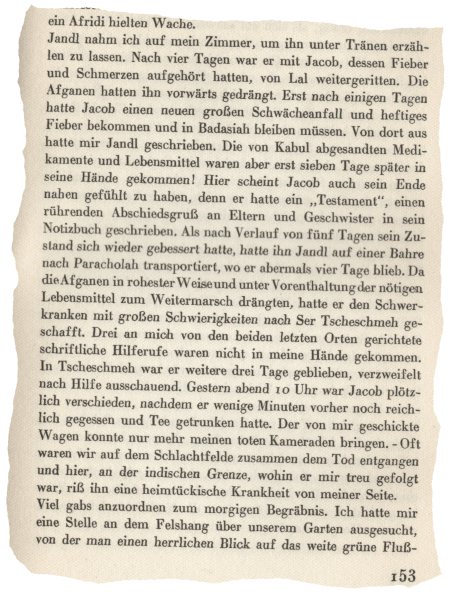 |
||||||||||||||||||||||||||||
|
"German
graves in
Afghanistan" |
||||||||||||||||||||||||||||
| The German doctor F. Börnstein-Bosta describes in his book "Mandana Baschi - Journey and experience of a doctor in Afghanistan" the tragic death of a German one-year-old boy who died in 1925 from an infection or illness and was buried behind the German Legation. In this book he mentions the tomb of Hans Jacob, but not the left tomb of Helmuth ..... (?). Therefore, I suspect that this grave was only later, next to the other two, occupied or erected. So, probably, the middle grave is the grave of this boy. That's why the name of this boy must have been Max Ott. | ||||||||||||||||||||||||||||
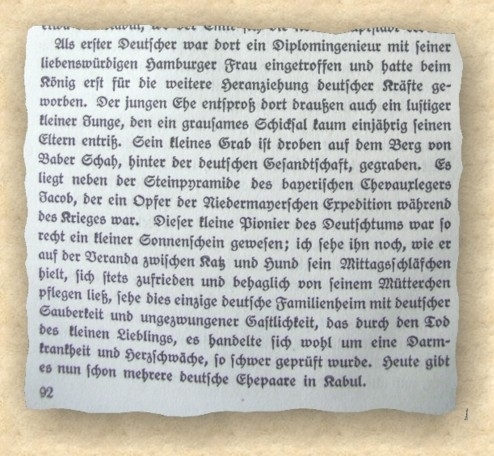 |
||||||||||||||||||||||||||||
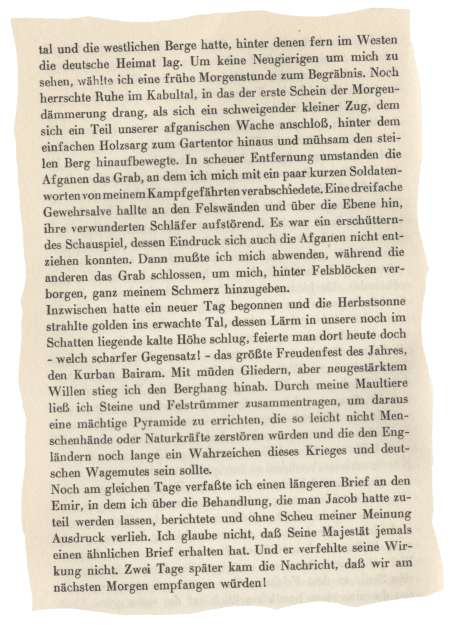 |
||||||||||||||||||||||||||||
| The grave in a photograph of the exeditionary leader Oskar von Niedermayer shortly before his departure from Kabul. | The
grave of Wachtmeister (stuff sergeant) Hans Jacob a close friend
of Oskar von Niedermayer. |
|||||||||||||||||||||||||||
| The grave is located in the courtyard of a private house and is maintained by the family. | ||||||||||||||||||||||||||||
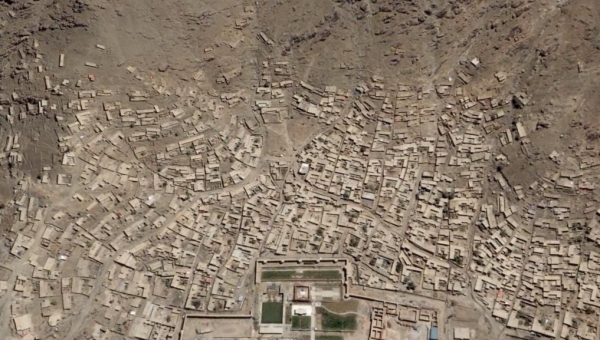 |
||||||||||||||||||||||||||||
| As you can see on this satellite image of Google Earth, the hillside above the legation at Bagh-e-Babur Park is densely populated today. | ||||||||||||||||||||||||||||
| In the lower part Bagh-e-Babur. | ||||||||||||||||||||||||||||
| There on the right side, the ruins of the former German Legation. These buildings have been rebuilt in the meantime. | ||||||||||||||||||||||||||||
| The accommodation in the German legation was perhaps only a provisional for recently arrived in Afghanistan Germans. My great-grandfather also photographed "The New Home," a former official residence of King Amanullah's grandmother. | ||||||||||||||||||||||||||||
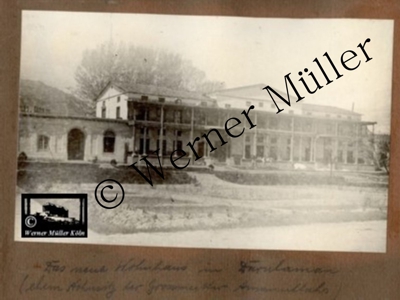 |
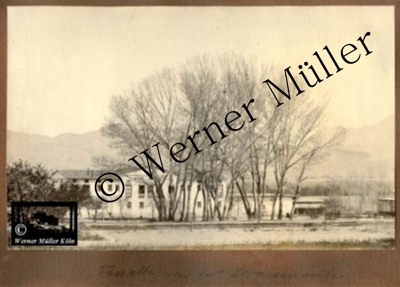 |
|||||||||||||||||||||||||||
|
"The new residential building in Darulaman
(former residence of Amanullah's grandmother) " |
"The same from the street" | |||||||||||||||||||||||||||
| And again one of the pictures says "... the new house in Darulaman." He has moved several times. But this time he writes that it is in Darulaman. It must therefore be an accommodation near the site of the Darulaman Palace. It is interesting to note that this is the AMTSSITZ of the grandmother of Amanullah. I do not know exactly what that means. In addition to the accommodation in the former home of Amanullah's grandmother, my great-grandfather photographed the garden house of the Tape Taj Beg palace where he used to live. Whether this move had something to do with the common chess games with King Amanullah, I do not know. Corresponding information was definitely in his diary. What was discussed during these evenings was unfortunately lost when the diary was burned. | ||||||||||||||||||||||||||||
| Also is no longer known whether the other Germans, such. As the chief engineer Horten, so luxurious or "family" were housed. | ||||||||||||||||||||||||||||
 |
||||||||||||||||||||||||||||
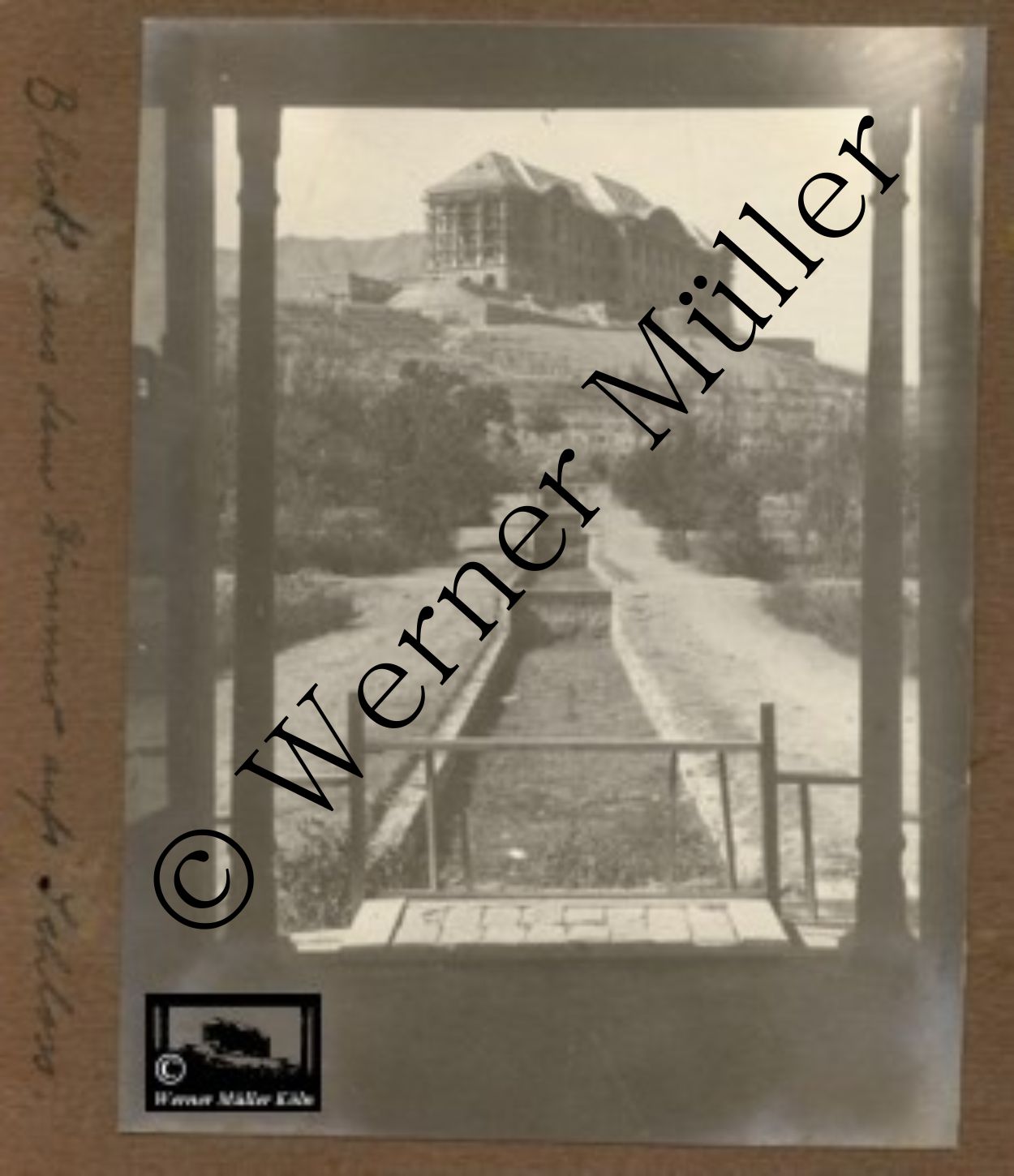 |
||||||||||||||||||||||||||||
| My great-grandfather lived in a summer house in visibility of the east side of the palace. | ||||||||||||||||||||||||||||
| This view he had from his dining place when he the garden house of Tape Taj Beg palace inhabited. | 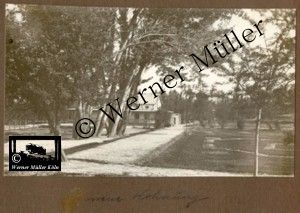 |
|||||||||||||||||||||||||||
"viwe
from my room to the palace" |
||||||||||||||||||||||||||||
Worker
down at the hill. lower picture part |
||||||||||||||||||||||||||||
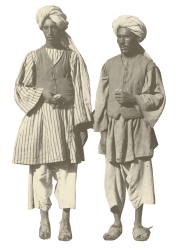 |
Right: "The summer house seen from street" |
|||||||||||||||||||||||||||
| In any case, at that time, he had a houseboy who kept the house in order. From this household helpers he told that with the end of his turbans next to the drying of the dishes also like dust wiped. Maybe one of the gentlemen who were referred to as friends in another photo is this houseman. | ||||||||||||||||||||||||||||